
The Vampyre’s Lexicon – Terminology & Lingo
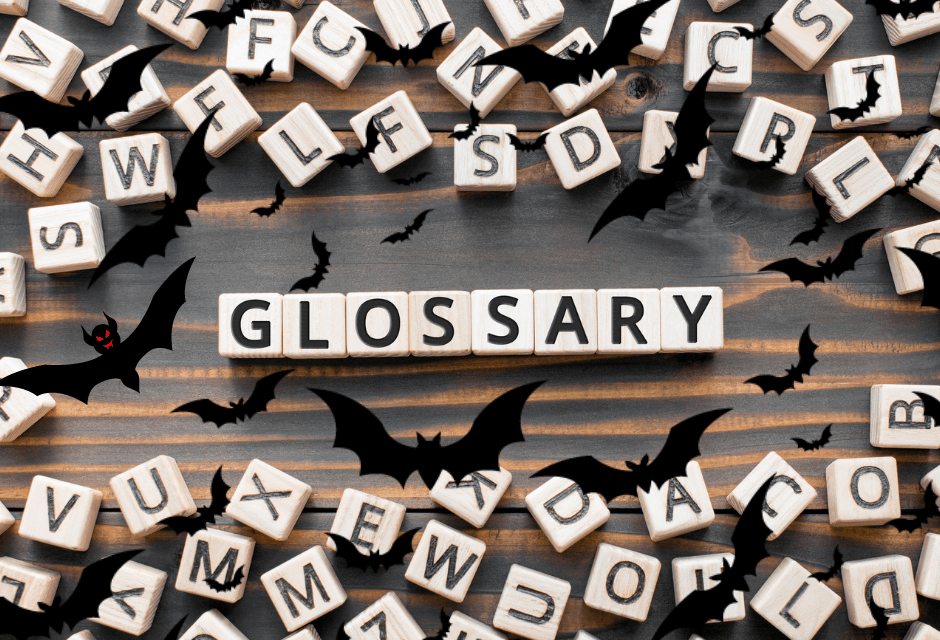
This Glossary of Terms has been compiled from many sources over the years, to include sanguinarius.org, psychicvampire.org, and other websites.
Jump to section by letter:
A, B, C, D, E, F, G, H, I, J, K, L, M, N, O, P, Q, R, S, T, U, V, W, X, Y, Z
Glossary of Terms
A
Abani:
A term used by the OSV to designate family relation to a House or bloodline. “Of the family of….”; for example: Angel, abani Sahjaza or Stephen, abani Omallie, for those in this small section of the vampire community.
Abbon:
An elder who has earned the respect of the community, and specifically the OSV but is not the member of any House or organization. Such vampires are usually strong willed, confident and very independent. Often they choose this path after becoming disgusted with or otherwise tired of the politics of the community. A special title given to honorary members of an OSV family who might either be Ronin/Teliob or members of other Households or Orders. The name of Abbon is useful for related Households or Orders to make alliances and show respect for each other and for select individuals who choose not to or are not interested in making a formal commitment to join a group for any reason. An alternate term in the Eclipsan system is Avavago.
Acolyte:
A member of an organization that handles administrative or supportive tasks for the Elders and/or Council of said organization. Specific examples include:
1. (Sanguinarium) Someone who is a member of the Synod and helps run administrative tasks such as moderating elists, checking spelling, helping with programming, etc.
2. (House Eclipse) An assistant or helper in any religious organizations associated with vampires (and mundanes for that matter). For example, an acolyte would ensure that an incense burner was in place for a ritual or rite, filled at all times and moved as needed. An acolyte may also handle ritual implements, bringing them to ritual participants and putting them away when no longer needed.
Adra
A term popularized by the Sanguinarium for a sponsor or mentor of someone in the community. The Adra is responsible for teaching their Nadja or Gevanma (Apprentice) the ways of the community or of a specific group including the Black Veil or other behavioral codes and the contents of the Scrolls of Elorath in the OSV system. In other groups, a mentor is called other names, such as the Eclipsan term Pibliar. In many groups the teachings depend on the Apprentice or Gevanma’s personal interest and specific safety requirements. This relationship can be defined as those involved see fit, ranging from a dom/sub, brother/sister, sire/childe, etc. or a multitude of other options. Also see sponsor.
Altered State of Consciousness (ASC)
A state of consciousness that differs from ordinary, everyday consciousness. Altered states are usually typified by a narrowed and heightened focus, intensified sensitivities, and an altered pattern of thought (typically from rational to intuitive and from linear to nonlinear). Some assume that altered states can only be achieved through the use of hallucinogenic substances, but fasting, drumming, dancing, meditation and other repetitive activity can be used to attain an altered state.
Ambient Energy
The energy shed by living beings, particularly people. Ambient energy floats freely in an area, tending to flow along currents in the subtle reality, and it may be charged with emotions.
Ancients
Those vampiric entities who are said by the OSV and the Temple of the Vampire to act as guides and tools of magical workings in those traditions. These are capable of appearing as whatever the being wishes, from ancient gods to totemic animals, such as wolves, bats or hawks, to archetypes such as the Dragon or Griffin. This word also refers in the OSV tradition to the ancient deities and mythical/spiritual personas such as Lilith, Set, The Ancient Vampyric Gods, Caine, Kali, etc. Also may refer to the belief that the Ageless exist somewhere and still guide sanguinarians. Thus the Greater Ageless are also referred to as the Ancients, or seen as lesser descendants and assistants to the Ancients.
Anemia
If you have anemia, people may say you have tired blood. That is because anemia, a condition in which there are not enough healthy red blood cells to carry adequate oxygen to your tissues, can make you feel tired. The main symptom of most types of anemia is fatigue. Other signs and symptoms of anemia include: Weakness, Pale skin, A fast heartbeat, Shortness of breath, Chest pain. Initially, anemia can be so mild it goes unnoticed. But signs and symptoms increase as the condition progresses.
Ardetha
Vampires who have been awakened through sympathetic vampirism, a magical system or ritual or by an epiphany or near death experience. Some vampires are said to have been made vampyres through a ritual or by another. The ability to do this is questionable, as most mentors are only known to be able to help someone come to terms with their vampyric condition, Ardetha are rare case, as the ability to “turn” another is a great gift or a rare ritual. Also referred to as Salbrox or Made vampires.
Astral Construct
A being or thing, created through a combined process of Will and active imagination, that exists on the astral level but may be tied to a physical object. Most Often, astral constructs are intentionally created by magickal workers to carry out some specific magickal function.
Astral Death
In modern magickal theory this is the second death, which occurs after the death of the physical body. In astral death, the astral shell or subtle body of the individual dies, releasing the immortal spirit into the Wheel of Death and Rebirth.
Astral Plane
A place which is generally conceptualized as an invisible parallel world that remains unseen from our solid world of form. It is the realm of concrete consciousness, the level of reality that corresponds to the human experience of dream, vision, out-of-body experience, and ordinary consciousness.
Astral Projection
The process of projecting the consciousness within the vehicle of the subtle body beyond the physical form. While it is projected, the subtle body remains connected to the physical body by means of a thin, silver cord. It is believed that if this cord is severed, the physical body will die. Astral Realm Nonphysical level of existence that is one step further removed from physical reality than the subtle realm. This is typically the realm accessed by those who practice astral projection.
Astral Shell
According to occultist Dion Fortune, the astral shell is the subtle corpse, which, under ordinary circumstances, dissipates a few days to a few weeks after physical death has occurred.
Astral Vampire
A being that moves through the astral plane and/or subtle reality and feeds off the energy of others. Astral vampires can be wholly nonphysical entities, or they may be living, physical beings who have the ability to move and interact on a nonphysical levels of existence. According to occultist Dion Fortune, an astral vampire is created when a particularly powerful magickal worker resists the second death and perpetuates this unnatural existence by preying upon the energies of others.
Aura
The energy of an individual as it extends out beyond the limits of the physical body. The aura exists in layers, or shells, of energy that move outward from the core of a person, with each shell being less cohesive and dense than the last. Some individuals are capable of perceiving the aura with the naked eye, and with practice many people can cultivate this ability.
Autovampirism:
The drinking of one’s own blood.
Awakening:
The physical and mental changes that occur when someone awakens to their latent vampire nature. The awakening typically occurs during or shortly after the onset of puberty, but in some individuals may take years to manifest. Those undergoing the awakening, undergo various mental and physical changes. These changes often include an increased sensitivity to light and particularly to sunlight, a growing affinity for night and darkness, having one’s circadian rhythm become inverted and switching from a nocturnal to a diurnal sleeping schedule, and experiencing the first symptoms of the thirst. Many experience acute feelings of isolation and alienation during this process, as their changing nature distances them increasingly from their “normal” family and friends. Many seek out organizations or groups to help understand their desires and newfound feelings. (See also “turning”.)
B
Beacon:
A particular feeling or energy signature generated by vampires in general, but latent or potential vampires in particular. The beacon seems to exist to attract other vampires to the potential vampire so that they may instigate the awakening process. (See also “vampdar”.)
the Beast:
The primal, instinctive, animalistic, bestial nature of a frustrated or desperate vampire, where he or she gets really evil-minded and aggressive and wants to just go berserk, rip people and things apart for the pure “fun” of it, and feed violently. It’s destructive and cold, and if you don’t control it, then you will be under its control. This is different from just “vamping out” but that is when it’s most likely to manifest.
Becoming
A process akin to awakening; it is the actual embrace or acceptance of one`s vampyric nature. Many individuals awaken to their true nature, only to end up hiding from it for the rest of their lives. The process of Becoming is often marked with a rite of passage, such as an exchange of energy or blood with a mentor or undergoing a ritual of death and rebirth. See also Awakening and Turning.
Bellah
An affiliate member of a Sanguinarium household, who is still in the outer circle and not yet initiated. Often has gone through the Rite or Oath of Dedication and has been sponsored by a full member of a house such as a Isro or Elder. They are also testing their place in the family. Bellah are also known as “dedicants” or “pledges”. Bellah are mentored, protected and guided by all more senior House members and cherished similarly to children. Typically, the mentor or Adra of a Bellah is responsible in part for their apprentice’s behavior and actions.
Between
The state between life and rebirth, or the level of reality where many entities reside while in this state. The term the Between is inspired by the Tibetan word bardo, which means gap and refers to the period of time immediately after death and prior to the next incarnation.
Bilocation
A technique, often confused with astral projection, by which the consciousness and perceptions are split between two or more locations. In bilocation, some portion of the consciousness remains with the physical body, allowing this body to remain active and aware, while a subtle projection is also extended to another location. The bilocator is able to perceive and interact in both aspects at once.
Black Swan
Those who enjoy the vampyre aesthetic but are not posers, nor are they vampyres. They are often donors, friends, companions, lovers, dayside family or those of other subcultures who usually understand, appreciate and respect the vampyre lifestyle.
The Black Veil:
Also known as the “Thirteen Rules of Community”. Composed by Michelle Belanger, Father Sebastiaan van Houten and COVICA, this is a set of 13 common-sense guidelines for the Sanguinarium as well as the vampire community. It deals with such things as responsibility, etiquette, feeding practices, the lifestyle, discretion, etc. The Black Veil has undergone several major revisions since its first incarnation in 1997 in attempts to be made more applicable and palatable to the real vampire community and not just the Sanguinarium; in 2003, it was revised once again and cut down to just seven tenets.
Blood and Roses
The OSV wedding ritual.
Blood Bond:
1.) A strong, sometimes undesired, bond or attraction which can develop in a donor towards the vampire he or she is feeding; this bond can be a mutual thing between both the vampire and his or her donor, but often is felt only by the donor.
2.) A rite, ritual or ceremony marking a commitment to a coven or an individual. It is also a term to reflect a vampiric marriage.
Blood Doll:
Someone who gives blood in hopes of looking cool and/or who may have erotic desires fulfilled by being fed on.
Blood-Drinker:
Anyone who drinks blood, regardless of motivation.
Blood-Fetishist or Bloodist:
Someone who is erotically attracted to the sight, taste or smell of blood; he or she generally has no physical need to consume it, and will usually be happy with small amounts. Blood-fetishism is often accompanied by other sexual fetishes, including sadism and masochism, and the blood is usually taken during sexual or fetish play, as in a bondage or domination situation.
Blood Junkie:
A derogatory term for someone who experiences the physical need to consume blood; a sanguinarian (see also “the Thirst”, “sanguinarian”). Particularly refers to one who has no control over his/her thirst and goes around feeding indiscriminately.
Blood letting:
The physical act of cutting or piercing the flesh in order to extract blood. This is commonly used for feeding as well as in bloodplay and fetishism. (See also “bloodplay”.)
Blood Play:
Similar to bloodletting, bloodplay is the act of using blood in sexual or fetish situations. Bloodplay can also refer to the integration of blood and bloodletting in ritual. (See also “bloodletting”.)
Blood sharing partner:
A more appealing term for a donor. Some donors dislike being called “donors”, as they feel it somehow belittles them or their role in their vampires’ lives.
Blood Vamp:
A short form of “blood vampire”, or sanguinarian.
Brood:
the year the individual first went through the Rite of Transformation. Example Lady N is brood of 1994 and Orisis had his fangs made in 2005, so he is brood of 2005.
C
Cabal:
The far-underground “shadow” community of sanguinarians in a particular geographic location. Few even believe they exist and Cabals include the Bloodbars and other unknown things. Cabals are very selective as to who even knows who is a member.
Chakras
In the Hindu mystical tradition, the seven main energy centers that are believed to run down the center of the body from the crown of the head to the base of the spine. A central axis of energy, parallel to the spine, connects all of the chakras. These wheels of light are believed to process energy, and each is connected to various functions of the body, spirit, and mind.
Chi:
The Chinese term for life-energy. It is also often referred to as pranic energy or life force. Chi is the bio-electrical energy which runs our bodies on a subtle level. Energy vampires and many psi-vamps believe that they can manipulate chi and feed upon it to sate their hungers. It is believed by some that, to a certain extent, blood vampires also feed upon chi, for a great deal of this subtle energy is believed to be concentrated into the blood. (Also, “psychic energy”, “prana”, “pranic energy”, “psi”, etc.)
Clairaudience:
The faculty of “clear hearing”, the ability to hear sounds inaudible to the normal ear, such as “spirit” voices; a faculty analogous to clairvoyance, but considerably less frequently met with.
Clairvoyance:
A psychic ability, that allows the person to see or find things.. (Clairvoyance) literally means “clear vision”.
Clinical vampirism:
A psychological condition, such as Renfield’s Syndrome, in which the afflicted person experiences a psychological urge to drink blood. This urge is often satisfied with their own blood, and sufferers of clinical vampirism typically bear slashes from razors and knives up and down their arms from where they have drawn blood from themselves. Particularly sociopathic forms of clinical vampirism drive sufferers to attack and sometimes (although rarely) even kill other people in order to drink their blood.A related condition is known as SMS, or Self-Mutilation Syndrome. This newly named pathology is becoming alarmingly common in American youths. Sufferers of SMS, often known as “cutters”, feel the need to cut into their flesh and watch themselves bleed. Some sufferers of SMS also drink the blood drawn out this way, although this is not standard for the disease. Most sufferers of SMS are redirecting feelings of anger, frustration, inadequacy, or emotional pain onto their bodies. (See “Self-Mutilation Syndrome”, and “Renfield’s Syndrome”.)
Court:
A regular social event which is much like a “town meeting” for members of the vampiric community in a specific geographic area. Court is usually held once a month at a local tea or coffee house, lounge or haven, and only vampires and those within the community are welcome. This is an opportunity to socialize with others in the community. News and announcements are made, poetry is read, new members, elders, etc., are introduced. Here vampires are generally free to escape mundane society. The host of the court is usually a locally respected Elder who secures a date, time, venue, and promotes the event.
Combo:
A vampire who is capable of feeding on blood as well as psi energy. It seems to me that most real vampires are capable of feeding from both, or using blood and psi interchangeably. Ex., “I am a psi/sang combo.” (Also, “Hybrid”.)
Coming Out (of the Coffin):
This means the same thing that it means for Gays (except they come out of the closet…). Involves being open or frank with people about being a vampire, drinking blood, feeding upon energy, etc. Those who have come out in this way do not hide their lifestyle at all, not even in their daily lives. Many people in the vampiric community choose to be “in the coffin” and are not public about their lifestyle outside of the community or scene.
Communion:
Interchangeable with feeding, or energy exchange. There are many forms of communion including unconscious, ambient, sympathetic, astral, tactile, visual, temporal and sanguine. There are also different levels of feeding including deep and surface.
Coven:
Groups of individual vampires or vampyre lifestylers, usually but not always located within a certain geographic area, who have banded together under a specific theme, set of ideals, traditions, common Sigil, havens, membership requirements, hierarchy and/or rites. Covens range in size from as few as three members to as many as hundreds. The organization and purpose of each Coven varies from fraternal (House Sahjaza); religious (Church of the Vampire — not to be confused with the Vampire Church); or familial (Clan of Lilith). Some titles given to leaders of Covens include Elder, High Priest, Patriarch, Matriarch, or Coven Master. There are no requirements for forming a Coven other than a group of people getting together, choosing a sigil, name and theme.
COVICA:
The now-defunct Council of Elders drawn from many different traditions whose purpose is to help network the community, standardize language and terminology, and encourage cooperation, if not outright unification between the diverse aspects of the Sanguinarium and vampire communities. COVICA stands for Council Of Vampyric International Community Affairs.
Current:
the vibe and spirit of a Family or Community.
Cutting/Cutters:
There can be many reasons for someone to cut themselves and a lot of them are neither related to vampirism or ‘attention seeking’ as most people believe. For people with physical pain or problems with depression, cutting can be a powerful coping mechanism and there is no shame in it. You can find a lot of useful information on cutting at the following website. (See also Self-Mutilation Syndrome)
Cycling energy:
The process of: Taking energy in, transmuting it, and releasing it back , as to not bring a whole room down
D
Dayside :
the experience of reality through the five senses, normal life from a Vampyre’s perspective. Rationality, science, mundane life.
Dedicant:
One who has formally accepted his or her latent nature and is actively pursuing the process of vampire Awakening. Dedicants typically receive instruction and guidance from one or more Awakened vampires, most often the person responsible for catalyzing their initial Awakening. The term Dedicant reflects their dedication to their own self-realization of being a vampire.
Dharma:
Often translated as duty, a Sanskrit term that indicates the path one must follow in their life. The idea of dharma is inextricably linked to the motion of karma, for it is in following ones dharma that one can gain release from karma.
Discordant:
an individual who actively works against the Current either consciously or unconsciously. See also: White Swan
Dominus:
A formal OSV term for “high elder” and often the leaders or most senior members of a household in the Sanguinarium system. Among the dominus are the high priests (Azra is used in the text though it is mentioned only in passing elsewhere) and primus (founders) of the family. In the Kheprian system dominus are 3rd degree. Dominus often lead covens, organize Houses and watch over Havens.
Donor:
Someone who shares his or her blood or life energy, without obligation. Many donors enter into partnerships with vampires. These partnerships are often also sexual in nature, although they do not have to be. Many donors prefer to be monogamous, offering themselves to just one vampire at a time. Some donors will offer themselves to entire covens, provided their offerings are appreciated and not abused. Donors are cherished and protected by responsible vampires and are often given gifts in return for their services. They are honored affiliates of a House or coven.
Someone who gives or shares their blood or life-energy, without obligation. Many donors prefer to offer themselves to just one vampire, but some donors will offer of themselves to entire covens, provided their offerings are appreciated and not abused.
Donor Swans:
In the OSV terminology, someone who shares their blood or life energy without obligation. Many donors enter into partenrships with vampires. These partnerships may often be sexual in nature, although they do not have to be so. Many donors prefer to be monogamous, offering their gifts to just one vampire at a time. Some donors will offer themselves to an entire House or Order, provided that their offerings are appreciated and not abused. There are several types of donor swans in the OSV system including Crystal Swans (pranic or psi energy), Crimson Swans (Sanguine) and Amber Swans (Pranic and Sanguine).
Dragon, The:
The Dragon is the “hunger” or the “thirst” of vampire fiction and mythology according to OSV, as well as somehow being the Higher Self in this tradition. It is the draw to consume pranic energy, which can often manifest as a blood lust or as an emotional vampire. As one follows the Strigoi Vii path, the Dragon may manifest as a temptation or draw to one’s night side. The primal nature of a vampire, interpreted by this group as primal fire. Some traditions believe that this is what causes the Hunger or Thirst. In the OSV it is also considered the inner light or higher self and supposedly can be mastered with the development of the Will, meditation, dreamwalking and thier concept of the Twilight balanc, which originally is a concept created by the Temple of the Vampire. The Dragon is referred to in the OSV tradition as being our true self, our creative fire, our power and our potential to supposedly somehow become superhuman. Eclipsans call this the Beast or Khaibit.
E
Elder:
A prominent member of the vampiric community who is honored and respected for his or her experience, knowledge, willingness to help others, accomplishments and devotion. Elders are often those individuals who have helped establish a community, organize groups, or help network the community.
Elorath / Scrolls of Elorath:
According to the OSV, this is the great vampiric essence and the vampiric astral spirits, called by the Temple of the Vampire the Undead Gods. This is one of the inner teachings of OSV. Some say this term evolved from the word “el-or-ath”, which is allegedly the Atlantian term for a vampiric spirit.”
Embrace:
A hug. Since turning or awakening someone does not involve any sort of hug, where the vampire wraps his arms around a person, drawing him or her close so he can bite them on the neck to feed or turn them into a vampire (a la Dracula or Christopher Lee), I am not going to define it as such, — regardless of the misusage of the word by others. Embrace does not mean turning, but it is an incredibly romantic word for an event which, in a lot of people’s minds, is extremely pseudosexual and erotic. (See “turned” and “awakened”.).
Emotional vampire:
It is important to note that there are two forms of emotional vampires; one is the psychological term of an emotionally needy person. This person may not technically be a vampire just an ordinary mundane that might have had something traumatize them, and they crave constant attention or emotional energy from a person…Unfortunately for the vampire community, psychologists coined the term “psychic vampire”, to represent these emotional vampires…They are often called emotional leeches. Without help, these types of people are usually incapable of having a normal healthy relationship.. But with therapy, they usually get better.
The other IS a Psychic Vampire that feeds from strong feelings or emotional surges. Uneducated, these individuals often resort to histrionic or narcissistic behaviors, constantly drawing attention to themselves, which they feed on. Some feel that there is nothing metaphysical or spiritual in their condition, it is a simple psychological disorder that is irreversible. Others feel that these vampires resort to emotional draw simply because they know no other way to access needed energy. With understanding, tolerance and proper training, these emotional vampires can be assets to the community by learning how to balance hyperactive individuals and overly charged environments.
(See “psychic vampire”, sense 2, and especially “psychological vampirism”.)
Energy signature:
The pattern of energy, vibes, or the feeling that is unique to each individual; a person’s psi ‘fingerprint’ identifiable in real life or astrally and oftentimes left behind long after a person has gone. Vampires supposedly have a particular kind of energy signature, and those who can pick up on this can identify them as vampires. An energy sig is different from a presence, though you can feel the presence of someone’s energy, too. (See also “beacon”.)
Energy vampire:
An individual who has a need to feed upon the lifeforce of others. Most energy vampires feed upon chi or pranic energy and avoid drinking blood. Some intermingle energy vampirism with blood-drinking. Also referred to as psi-vampires, most energy vampires exhibit the same characteristics that distinguish other real vampires, including light sensitivity, a nocturnal lifestyle, and periods of the Hunger or Thirst. (See also “chi”, “hunger”, “psychic vampire”, “real vampire”, “thirst”.)
Etheric Body:
the subtle energy that permeates the physical body like a sheath. It is closer to the body than the astral Body.
Excommunicated:
A term that some vampire groups like to use with individuals, who, by their own judgment, have committed some great crime in their eyes, such as disregard to the Black Veil. Excommunication is limited to that group and not that of the entire vampire community as a whole. No single group has that much authority or influence. Cast out of a coven or the vampiric community as a whole. (See also “Invisibles”, “Sin nomine”.)
F
Family:
A term used by many people to describe their coven or their close circle of vampires and friends. Also, a general term for all members of the vampiric community.
Fang-Smith:
Refers to a individual who creates quality fangs for those who have a passion for the vampire aesthetic.
Fashion vampyre:
This is not a type of actual vampire. Someone who does not have the vampiric condition, and who just dresses the part. The fashion vamps are only into the aesthetics (fangs, contacts, fashion) and not the philosophy or spirituality of the lifestyle — think “fashion victim”. (See also “wannabe” and “poser”.)
Feeders:
Another term for sanguinarians which distinguishes them by their need to feed upon blood.
Feeding:
The act of consuming blood (or, in the case of psi or energy vampires, pranic energy) from someone (or an animal). (See also the “Hunger”, the “Thirst”, and the “Need”.)
Feeding circle:
A group of donors, usually from three to seven, who feed a specific vampire or coven of vampires.
Filtering/Filter Shield:
The word used for a type of shield made up of psychic, pranic or astral energy or Chi that allows some things in while blocking others. This is usually created by visualization of the one to posess the filter shield, and often focused into a specific amulet or other focal point. This type of shield is primarily used by psivamps or psionicists who wish to work only with specific types of energy and find other types distracting or difficult to work with. A person must be grounded and in a state of relaxation to begin building any type of shield or filter with energy.
Fledgling:
someone who has gone through the Rite of Transformation and is within their first year.
Fruit-Bat:
A humorous term for a nutty vampire. This indicates a vampire who’s “not all there”. The demands of the lifestyle can be too much for some, and in some cases, their mental and emotional states clearly suffer. This can also refer to a vampire who has a habit of acting wild and crazy, kind of like a court jester or class clown, mostly for attention and entertainment purposes.
G
Gaja:
Originally a word used by the Romani to designate a person who does not follow their lifestyle, it was a derogatory term that meant “root-feet”. Now it is used by OSV as a formal term for fashion vampire or someone who is in the vampire scene, portrays the archetype of a vampire but does not feed. Most real vampires will not associate with these liars and fools, as their presence is damaging to the community.
Gizyax Bloodfeud (formal term from House Eclipse)
When two vampires, usually two who each are leaders and are well thought of in their respective or the general Community decide for any reason, from moral to political to religious not to get along, it can send shockwaves through the entire community and leave many people hurt psychologically, physically or financially. Because vampires tend to have strong personalities and legendary egos, we often argue or even develop deep rivalries or hatreds for one another for many reasons. Rather than make the foolish and unreasonable demand that we all get along like one big, lying, fake dysfunctional family, House Eclipse has advanced this term and standard of behavior for vampires who do not get along for whatever reason. This is essentially a gentleperson’s agreement to disagree or whatever issues, but not to try to sweep others into the argument. Stemming from this is the agreement not to fight, harass, flame or argue online on message boards both take part in. Vampires in a G izyax BloodFeud also agree to avoid eachother in public places or if forced into the same area to cordially avoid one another with no harassing words, gestures or movements to disrupt the event or place for others present. Such vampires do not need to play at being friends and may make their feud known openly as much as they like and expound on the reasons therefore in private. The main purpose is to maintain peace on the Internet and in our Vmadea or Havens, while still allowing personal dislikes and arguments to exist.
Glyph:
The OSV term used to describe their set of rune-like symbols that have specific individual meanings to it’s members. Many other groups have their own sets of glyphs, but prefer to call them other names, such as sigils or runes.
Golden Circle:
A word originally coined by this group to describe a group of donors and mundane allies a vampire coven or household holds sacred and protects. The people around a Coven or Household, which include Back Swans, vampires, lovers, etc. Members of a vampire’s Golden Circle have a special relationship to the vampire. A sacred and protected group of donors dedicated to a particular group of vampires and looked after by a specific member of that group.
Grazing (slang, Sanguinarius, Sanguinarium)
This is feeding style that is often is looked down upon by the rest of the vampire community in which a vampire randomly feeds upon unscreened donors typically picked up in nightclubs and Goth bars. Vampires who feed without discretion in this manner have supposedly been derogatorily referred to as Strega. This is of course inaccurate as a strega is a witch according to the correct definition. * See also Strega.
Grotto:
A no longer used and outdated term for a local population of vampires in close geographic area, this usually refers to include all vampyres in a specific area, that according to the Sanguinarium includes the phonies and fake lifestyler and RPG wannabees that they call Gaja. They also use a more specific term, cabal, which is supposed to only refer to true vampires and the underground, non clubbing community. This term have been replaced with the term “Haven.”
Grounding and Centering:
A term used by the pagan, magical, occultist, vampire and other communities to refer to the practice of stablizing oneself psychically through linking with the earth and ridding oneself of excess or nonuseful energy. This can be done on one’s own or through a more grounded vampire, usually a Mradu in communities using the caste system. Many techniques for this exist, varying according to philosophy, religion or House and Order.
H
Haematodipsia:
A strong form of haematophilia.
Haematomania:
A strong psychological craving for blood.
Haematophilia:
An erotic attraction to the taste, sight (or smell) of blood.
Haemosexuality:
(See “blood fetishist”.)
Harvesting:
(general, OSV) The act of going out to collect pranic or psychic energy. Used only in the OSV.
Haven:
A Vampyre nightclub or other gathering place. Considered hallowed ground, the haven serves as the social hub of a given community, providing a place where all the community can gather and socialize. Often, special functions arranged by the vampiric community in an area are held at the local haven.
“Haven Rules”:
Seeing this means that a particular place or event is to be treated with respect as a neutral ground for everyone involved. You are to respect the event or venue as if it is your Haven and cause no issues within its walls.
House / household:
A group of vampires united under a common theme, set of traditions, philosophy / beliefs, sigil and hierarchy/ structure. The purpose of a House or household can range from the merely fraternal, to the spiritual. The number of members in a house or household can be as few as three or number into the hundreds, although I generally think of “household” as having a smaller number and “House” as being the larger counterpart, perhaps consisting of a number of households.Any group of several or more vampires can get together and form a household or House; there is not a requirement to be “approved” by some official council or board; becoming recognized and accepted by the rest of the community, however, is a matter of time, publicity, reputation of the members, their conduct, etc. Some of the more widely known, established Houses are House Kheperu, House Eclipse, House Sahjaza, House Quinotaur, House Nekhbet; there are many others, as well.
“Human”:
A term used for the purposes of distinguishing those who are not vampires. At best, this term is misleading because it implies that vampires are not human. (See “mundane”.)
the Hunger:
The desire to feed, also identified as the Thirst or the Need. The Hunger is both a psychological and physical sensation. Physically, it manifests as an intense hunger or thirst — but is not satisfied by food or drink. Psychologically, a vampire in the throes of the Hunger feels agitated and empowered at the same time. Pulse, heart rate, blood pressure, and sometimes even body temperature, increase in anticipation of the act of feeding. (See also “feeding”, the “Thirst”, the “Need”.)
Hunt, the:
The biological urge to go out and seek food, or the act of hunting food. Rarely used nowadays due to negative connotations.
Hunter:
Someone that hunts, stalks, threatens, or does harm (whether it be physical, psychic, psychological, or emotional) to someone because he or she is a vampire, or because the hunter believes them to be so; or which gathers information to report those who are vampires. Buffy the Vampire Slayer and Blade fans are not included in this category; it applies to seriously unbalanced individuals who really are on some sort of holy hate crusade and intend to follow through with violence or action. (See also “slayer”.)
Hunting:
Actively going out and seeking donors or sources in havens or in public. (Some even go to the mall!) This means bringing them home to feed or to eventually screen them. At one point, this was considered safe, but with the advent of HIV and AIDS, hunting indiscriminately is considered irresponsible and extremely dangerous; there still must be a period of screening time. Vampires who feed irresponsibly are looked down upon; and are sometimes “excommunicated” by their elders for this offense.
Hybrid:
A vampire who is capable of feeding on blood as well as psi energy. It seems to me that most real vampires are capable of feeding from both, or using blood and psi interchangeably, so is the term “hybrid” really necessary, or accurate? (See “Combo”.)
I
Immortal:
Term occasionally used to refer to or describe vampires. Though technically, it means incapable of death or dying, it is used much more loosely in reference to vampires, implying that they are not subject to aging, are impervious to disease and injury, etc., and that they are above and superior to “humans” or “mortals”. God is immortal; vampires are not. Further, it has not been incontrovertibly proven to me that vampires do indeed experience a capability of an extended lifespan. Check with me in about 20 to 30 years, and I should be able to tell you something more definite about that…
Incubus:
The plural is incubi. A male sexual vampire. See “sexual vampirism”. Historically, the term was used to describe a reason for the sexual dreams a person sometimes experiences, and were thought to be caused by a demonic spirit which took the form of a female in order to drain a person of his or her energy and lead the defenseless person into sexual sin while they slept.
Inheritors:
A belief within the vampire community that the vampiric condition is brought about through a genetic mutation. Those who espouse this belief take a very scientific view of vampirism and feel that every aspect of the condition could feasibly be quantified and explained if given enough serious scientific study. Those who believe in vampiric inheritance feel that the mutation is passed along from parent to child and upon it as something, which makes vampires distinctly different from ordinary humans. Those who believe in the inheritance theory suggest that true vampires existed at some point in our distant past, and that they interbred with humanity. With this paradigm, however, it can be deduced that as the line gets more and more watered down, the characteristics of vampirism will become weaker and weaker and weaker until they are lost altogether. Inheritors feed upon blood, life-energy, or both.
Inner Circles:
known formally as the OSV (Ordo Strigoi Vii) is the esoteric wing of the Family.
Inner Glamour:
development of will power, self-discipline, confidence and personal empowerment to build a stronger individual and control of one’s life.
Inner Sanctum:
a sacred space for the Family such as a ritual chamber, VIP back room at a club or any place only allowed for members of the Family, temporary or permanent.
Invisibles:
Those members of the community who, having been ostracized and stripped of their name, are treated as if they no longer existed. Invisibles have committed some great crime in the eyes of the community, and for this they are no longer allowed to associate themselves with the rest of vampire culture. (See also “excommunicated”, and “sin nomine”.)
J
Jahira
A “seeker” who has not dedicated to a household but agrees with their philosophy and is interested in dedicating to the family. Also an ally of any kind who gets along with a House and is welcome in Havens, but is not a formal member. Later called the first Ordeal of the OSV, in which an individual who has chosen to become a member of this group has learned the basic precepts of the Order’s philosophy. Also is used to refer to those who complete this Ordeal.
K
Karma:
A Hindu concept related to reincarnation and the evolution of the soul widely adopted by the West. Karma is frequently misrepresented as a sort of rule of return where what you do, good or bad, will come back equally to you. However, Karma is not necessarily about qualities of good and evil so much as how a person follows his or her dharmic path. If one fails to fulfill their dharma and learn the lessons therein, that person will return again and again in progressively difficult incarnations until the dharma and its lessons are fulfilled.
Keystone:
An individual who served a pivotal role in a member of peoples past lives. The keystone subsequently serves as a nexus point for these souls in their current incarnation, drawing them together both energetically and geographically. In addition, a keystone often has a catalyzing effect on these individuals, facilitating their awakening as they are drawn closer to the center. Some vampires have referenced this type experience with reincarnation or being an old vampire soul.
Kheprian:
A type or group of vampires believe themselves to be among a specific family of people who received an Alteration to their energy body some thousands of years ago which made them vampires. House Kheperu is only one Kheprian organization, and not all
Kheprians agree with its teachings and practices. It needs to be emphasized that following the beliefs of House Kheperu does not make you a Kheprian, nor does being a Kheprian mean that you’re a member of House Kheperu.
Kherete
A person who follows the teachings of house Kheperu and the kheprian path, but who is not an actual member of house Kheperu. .
Kitra
A Vampire Counselor.
L
Latent vampire:
Someone who is already naturally a vampire, but whose vampiric tendencies have not yet manifested. Apparently, some latent vampires may need to be “turned” or “awakened”, while others may have their tendencies “activated” by indeterminate causes. Latent vampires sometimes seem to stand out to other, already established vampires through a phenomenon known as the “Beacon”. (See also “awakening”, “beacon”, “turned”.)
Leech:
1.) A small, bloodsucking worm;2.) An incredibly rude and derogatory (well, at least disrespectful…) term to call someone who is a vampire.
Legacy:
The history of the bloodline of a particular vampire or the Ancient they trace their spiritual or physical descent from.
Lilith:
History’s first recorded feminist, she was the first wife of Adam, and created as an equal. When she declined to submit to Adam as his subordinate, he went whining to God, and God cast her out of the Garden of Eden, then created Eve, allegedly from Adam’s rib, and therefore supposedly subordinate to him; apparently she was, as he didn’t whine for a third wife (but since this is not about Eve, I won’t elaborate). Lilith was later demonized by patriarchal societies who felt threatened by female equality; still later, she was deified by others. Not a bad job for a lady, eh?It is theorized by some that, though entirely as human as Adam, since Lilith had her own complete set of genes and DNA, she is the progenitrix [female progenitor] of a separate strain of humans, which is nonetheless capable of intermingling with the more common Adam/Eve strain. It is theorized by some that this strain is where vampires come from. If this is so, then it could explain why vampirism seems to run stronger in some family lines, yet appear spontaneously or only sporadically in others.
Lillitu/ Lilian/ Lilin:
Also the Children of Lilith. This is an order or movement within the vampire community, which promotes the idea that Lilith was the spiritual forebear of vampires. The Lillitu cite the Hebraic tradition that depicts Lilith as Adam’s first wife who was cast from the Garden for refusing to submit to Adam. According to the folklore, which surrounds her, God cursed her with a thirst for blood, and she went forth and started a line of demonic children. Lilith and her heirs were believed by the Israelites to feed upon infants and young men, drinking their life and their blood. Lilith was probably borrowed by the Israelites from Babylonian lore, where she appears as a wild woman who haunts waste places. She is traditionally depicted naked, with long flowing hair, wings and the talons of a bird of prey in place of feet. As the Lady of Beasts, she is often accompanied by wild animals, usually lions or owls. The male counter-part of Lilith is the vampiric man-bird Gelal, who makes an a ppearance in the ancient Sumerian Epic of Gilgamesh. Many Lilin are visited by Lilith in dreams or visions, or are guided by her in other ways. Many of the Lillin drink blood and also incorporate blood into their ritual.
the Long Night:
The name for the festival celebrated on the Winter Solstice. Occurring in mid-December, this night is the longest night of the year, and many households and covens gather together to celebrate this. It is a festival of community where everyone relaxes and socializes. It is also the traditional night to recognize new members of the community or a coven or to perform rites of passage.
Lorekeeper:
A respectful and reverent term to refer to a teacher, wise man or woman, scholar, librarian or other collector of knowledge. They are to be treated with respect and reverence and our Coven will often go out of their way to help these guardians of knowledge.
M
Magister:
A general term in the OSV system for an officer of a Strigoi Vii court’s triumvirate which traditionally includes the Master of Ceremonies, Keeper of the Veil and Keeper of the Scroll. Also used as a respectful title for any House elder.
Magnus:
The host of a vampire gathering or owner of a haven in the OSV.
Matriarch:
A term used to refer to the female founder or leader of one of a Household or Order.
Mentor:
A guide and teacher to a new or inexperienced vampire; the one who helped him or her through the awakening. (See also “sire”.)
Meridians:
Energy channels that run throughout the body. Traditions such as Qi Gong recognize numerous meridians and tie them to the healthy functioning of various bodily organs.
Moroii:
*(formal, Sanguinarium) The word in the OSV system to designate an “elder” of a traditional Sanguinarium household and usually has the power to form their own clutch or local coven of a House and sponsor members of an outer circle. Moroii may break away from their parent group and create local covens. This term originally comes form the Romanian term for a living or partial vampire.
“Mortal”:
A term used for the purposes of distinguishing those who are not vampires. This term is, at best, misleading because it implies that vampires are “immortal”. (See “mundane”.)
Mradu:
A formal term for a member of the guardian/warrior caste in the system created by House Kheperu. Also used as a respectful title for the same. Within the OSV and Kheprian caste system, they are protectors, guardians and warriors of these community segments. It is considered by those using the caste system to be the duty of the Mradu caste to safeguard those in the community, seeing that members are not harmed by threats within the Houses, Orders and Covens of the community (usually due to tiffs and squabbles between overegotistical vampiric “leaders”) or from those outside it. Most members of the Priest or Ramkht caste like to have at least one Mradu who is especially trustworthy as a companion and guard. The Mradu are often used to enforce a House or Order’s rules within it’s members and enforce the authority of those in command of such groups so their will and decisions are not questioned. In ritual work by these groups, they are used to generate energy and maintain t he protective circle. In other groups, Mradu serve some silmiar functions, such as protection and bodyguarding, as well as contributing to a House through the discipline of the study of martial arts. However, these groups do not feel the need to “enforce” anything and instead use the Mradu as grounds and reality checks for the often flamboyant egos of the Ramkht and Kitra. Not that a Mradu is not capable of an ego, but they are less likely to get caught up in the hubris of acting as a leader, since they rarely take such a position. In the Eclipsan system, Mradu are often Adna to an Elder or other leader. A new term used by House Eclipse is Amakhi.
Mundane:
1.(OSV and Sanguinarium) Term used to distinguish those who are regular people who are not vampires and who have no understanding of our culture. This term came from the Renaissance Fairs that many vampires frequent and is also largely in use by the SCA.
2. (Sanguinairus) A term used to distinguish those who are not vampires from those who are. This is, I feel, more accurate that “mortal” or “human”, and serves to distinguish those who are merely living normal, mundane lives and unencumbered with the life of a vampire.
3. (Darkness Embraced) One’s material existence in the mainstream world. Mundane existence encompasses dealings with regular society, maintaining a job, paying bills, feeding and clothing oneself, and keeping an apartment or house. People who are entirely focused on this material existence to the exclusion of all things spiritual are generally termed mundanes. Some individuals in the vampire community use the term mundane to denote non-vampiric individuals. However well intended, there are many non-vampiric people who take great offense to this term and visualize it as a pretentious and misleading remark. To call someone mundane is to elude that they are not capable of understanding levels of spirituality. Quite the contrary, a non-vampiric person can be very spiritual on various levels. Spirituality is certainly not privy to vampires only.
N
Nadja:
The OSV formal title for an Apprentice or Gevanma who is being taught the traditions of a specific House or Order, such as the OSV or Kheperian groups. They are taught by a mentor known in this system as an Adra, and in others simply as a mentor or a Pibliar.
the Need:
The need to feed. When experiencing the Hunger, one is said “to be in Need.” Very strong feelings of the Hunger are referred to as “deep Need”. (See also “feeding”, the “hunger”, the “thirst”.)
Nephilim:
A rather widespread belief within the vampiric community, which asserts that vampires are the descendants of the Nephilim. The Nephilim are demi-human beings that were sired by angels, as related in Enoch I, a book that was dropped from the Bible in the early stages of its canonization. Some Nephilists believe that the vampiric condition is genetically traceable to these otherworldly fathers. Others are content to suggest that the Nephilim simply represent a higher kind of being which came down and intermingled with humanity. As far as the beliefs of the second order of Nephilists are concerned, vampires experience their condition because they are more spiritual than most beings, with a higher “vibration” or “frequency” to their spirit which somehow burns their bodies out quicker and makes it necessary to feed. Some Nephilists feed upon blood, while many others feed primarily upon life-energy. Most seem to incorporate blood into their magic and ritual.
Nightside:
The spiritual and magical side of the Twilight balance. The vampiric instincts, gifts, urges and training of a vampire. One’s nightside is all of the parts that makes up their vampyre existence. The opposite of their mundane lives.
Neovampyre / Neovampire:
A person who is not a natural vampire, but who is a student of vampyric/vampiric skills, philosophies and/or magicks; i.e., a person who (for lack of a better word) “converted” to vampyrism.
O
“of the Blood”:
A term sometimes used to refer to someone as being a vampire. A Vampyre who is “of the blood” has a deep energy sense about them that reads as vampyric. You can feel their connection to the vampyre current as they have a very strong beacon.
Outer Glamour:
another term for “Lesser Magic” employing concepts like NLP, social dynamics, presence, illusion, seduction, fashion and communication skills to control the outcome of social interactions.
Ordeal:
Within the OSV system, these are a system of initiations and advancements that incorporate rites of passage within a regimented system of of learning via a mentorship program. The Outer Circle of this system’s Ordeals include the levels of Jahira, Bellah, Calmae, Moroii, and Magister. The Inner Ordeals of this system include Kharrus, Nomaj, Dominaus and Azra. The actual contents of these Ordeals are not revealed to outsiders.
Order:
This term is an alternative word used to describe groups that are like Households but often have higher numbers of members or larger geographical range. Orders can also refer to Houses that have grown to spawn smaller groups, like clans.
OSV – Ordo Strigoi Vii:
Father Sebastiaan’s secret society reserved for serious dedicants to the Sabretooth current. It is considered the esoteric Inner Circle of Sabretooth.
Otherkin:
Someone who identifies with something other than his or her human side mythological or fantastical being. He or she takes on the astral form of the mythological being when they are in the astral plane. Often, otherkin have physical attributes, mannerisms or thought-patterns identified with their particular being, such as fae having an elfin appearance, or wolfkin having a pack mentality. Types of otherkin include fae or faeries, dragons, elves, angelics, and so forth. Some consider vampires to be otherkin, while others do not. The animal side of this are therians.
Otherside:
The nonphysical space immediately tangential to physical reality and inhabited by ghosts, the disembodied, and other discarnate entities. The Otherside is another term for the subtle reality.
P
Pack:
A very closely knit small group of associated, Bonded or otherwise related vampires, therians, or otherkin. These groups are very closely knit and often share deep physical and psychic bonds. Also called a clutch, coven or circle. Packs specifically are much more common amongst pack animal therians and certain styles of otherkin.
Paganism:
General term for any number of modern nature-oriented religions. Paganism, more properly termed Neo-Paganism, is a revival of pre-Christian practices and beliefs that often include the practice of magick, a celebration of divinity in both male and female aspects, and a belief in reincarnation.
Pandemonium:
Pandemonium is an OSV term for a generally unpleasant experience which includes but is not limited to an acute heightening of all of a vampire’s sensitivities, a change in the person’s manner, alterations in breathing, pulse rate, and thought patterns, as their body gears up to go out and attempt to satisfy the thirst. This phenomenon is when the “beast” or “darkside” is very definitely felt as a real force within the vampire’s psyche and the vampire’s self-control teeters on a razor-edge. This particular phenomenon is experienced by both sanguines and psi vampiress alike, and it serves as a distinguishing factor between those who are real vampires and those who are simply blood fetishists. People outside OSV often call this by different names.
Parasite:
A completely insulting and derogatory term to refer to or call a psi-vamp or emotional vampire, implying that they are thieves and have no honor.
Porphyria:
An acute medical condition which has been postulated by some scholars to have inspired the vampire myths of the past. Sufferers of porphyria have pale, flaky skin and are very sensitive to sunlight. Their gums often recede excessively, giving their teeth an elongated and possibly fang-like appearance. Porphyria is caused by a deficiency in the enzyme which helps produce heme, a constituent of the blood which helps carry oxygen through the body. Dr. David Dolphin was the first to suggest that porphyria was the inspiration for at least some of the Mediaeval vampire myths, contending that some of the sufferers may have been driven to drinking blood in order to relieve their symptoms. As a result, the condition has come to be known in modern times as “the Vampire Disease”. This appellation is very misleading, however, as porphyria only superficially resembles the vampirism of folklore and there is no supporting evidence to Dr. Dolphin’s assertion that porphyria sufferers have been driven to drinking blood by their disease.
Poser:
Someone pretending or claiming to be a vampire who is not, with the intent of deceiving others, by making false claims as to their powers, abilities, lifespan, etc.
Potential:
A potential vampire. Essentially, someone whose vampirism is latent and unrealized, but who, with a little guidance from another, could realize they have the vampiric condition. See also Latent vampire
Pranic energy / Prana:
A term for the subtle life force energy which is found within and throughout all living things. Also called chi, pranic energy, psychic energy, psi energy, etc. The life-force that surrounds and is contained in living things. It permeates each individual as well as the Universe at all levels. It acts as physical energy, mental energy, where the mind gathers information; and as intellectual energy, where information is examined and filtered. Prana also acts as sexual energy, spiritual energy and cosmic energy. All that vibrates in this Universe is prana: heat, light, gravity, magnetism, vigor, power, vitality, electricity, life and spirit are all forms of prana. This is the life-force that energy and psychic vampires feed upon. This energy is also contained in the blood and is believed by some to be an integral part of the transfer which occurs between a donor and a sanguinarian.
Predator:
A vampire on the hunt for food in the Illuminatti system. The opposite is known as prey. Can be used to refer to the hunting instinct of the Beast or Khaibit as well as the act itself
Prey:
The opposite of predator in the Illuminatti system. A mundane or other vampire that the Beast, Khaibit or Hunger regards as food. The target of a vampire’s Hunting instincts.
Primal-Shift:
The phenomena of feeling the primal core vampyric part coming more to the surface where sensations and craving become more apparent. When there is a distinct feeling of separation of the more reserved, in control part of the vampyre , towards a different kind of control.
Primii:
The leaders of a household, often one of a triumvirate who run the household’s affairs in the OSV system. Primii should have past the Mor-Roi Ordeal or Tabaan level and the Dominus Ordeal or Jaidah level. Also called the Council, Ohorelia or Jhatyet in some traditions.
Progenitor:
A vampiric parent who has procreated, also called a sire, mentor or maker.
Progeny:
The product of procreation, the chylde of the Sire.
Prospectus/Book of Laws:
A scroll, book, CD or other recording device which sets the traditions, organization, philosophy and creed of a household, court, guild or council. A copy is often given to new members.
Prospectii:
The OSV term for a seeker who is interested in that group but has not completed any of the Order’s Ordeals or accomplished any of their formalized training.
Primus:
A vampire, almost always an elder, who founded or is the leader of a large family or coven of vampires.
Psychic attack:
Any type of unwelcome paranormal or ethereal intrusion intended to cause harm or disruption to the recipient. Psychic vampire attacks are considered a form of psychic attack, especially when forced upon an unwilling victim. (See also “psychic vampire attack”.)
Psychic vampire, Psi vampire (psi-vamp, for short):
1.) Someone who “drains” life-energy (prana, chi, life-force, whatever) rather than blood from others. Psi-vampires may or may not consume blood as a means of extracting pranic energy.Though the two terms refer to the same being, they do so with different meanings in mind. Some insist on calling psychic vampires “psi-vampires”, and insist that “psychic vampire” is incorrect, and then proceed to “prove it” by splitting etymological hairs. I disagree. There is a distinction which needs to be made between the two terms. “Psychic vampires” are called such because they feed psychically, as opposed to physically. However, it could be argued that psi is the auric or life-energy where as “psychic” is actually now thought to be shared thoughtwaves from a collective consciousness. So “psi-vampire” refers to what they feed upon, whereas “psychic vampire” refers to how they feed. Not infrequently, psi-vamps may also experience the Thirst in varying degrees of intensity, and in fact, there are many similarities in condition between the psi-vamps and the sanguinarians, with the main difference being, so far as I can see, the psi-vamps’ need to drain pranic energy, and ability to do so.2.) A psychic vampire, in psychiatric terms, is someone who drains emotional energy without giving anything back, and can make the other person very tired, depressed, emotionally unbalanced, or worse, if too much is drained; an emotional vampire. Katharine Ramsland discusses this in depth in her book, Piercing the Darkness, (Harper Prism, 1998), pp. 190-196, referred to as “covert vampire”. (See also “psychological vampirism”.)
Psychic vampire attack:
An uninvited and unwelcome draining of one’s vital energy, or chi or pranic energy. A psychic vampire attack occurs when a psi-vampire targets someone and feeds or attempts to feed. This can be done from casual contact, from across a room, or even through dreams. These attacks are not always just for draining; they can also be an attack on the mind itself, causing the target to hear, see, and feel things. Attacks of this nature can range from mild to very severe, sometimes leaving the victim despondent or even physically sick from being drained so. It’s debated whether one can become a psychic vampire from repeated severe psi-vampire attacks. In general, though, this seems only to produce a condition known as sympathetic vampirism. (See also “sympathetic vampirism”.)
Psychological vampirism:
These individuals often have a histrionic or narcissistic personality disorder and they are constantly drawing attention to themselves. They usually create dramatic situations and then demand emotional support from those around them. These individuals are emotional vampires. There is nothing metaphysical or spiritual in their condition, it is a simple psychological disorder. Yet it leaves the victims of these clingy, whiny people emotionally and mentally drained after dealing with them. These individuals are not to be confused with psychic, psi or energy vampires. (See also “psychic vampire”, sense 2.)
Puppy:
A somewhat derogatory term for one who has developed an undue fascination, obsession or bond with a vampire and follows him or her around, trying to gain the vampire’s attention or approval, and fawning over him or her, in a manner not unlike a puppy dog follows his or her master around. (See also “blood bond”.)
Q
Qi Gong:
A Taoist practice that harnesses energy for healing. One of the aims of Qi Gong is to cultivate and refine personal energy so as to improve physical, mental and spiritual well-being.
Quantum Mechanics:
A fundamental theory of matter and energy that explains facts that previous physical theories were unable to account for, in particular the fact that energy is absorbed and released in small, discrete quantities (quanta), and that all matter displays both wavelike and particlelike properties, especially when viewed at atomic and subatomic scales. Quantum mechanics suggests that the behavior of matter and energy is inherently probabilistic and that the effect of the observer on the physical system being observed must be understood as a part of that system. Also called quantum physics and quantum theory.
Quinotaur:
A type of sea beast referred to in the Quinotarii system. Legend has it this beast, or one similar to it impregnated Merovech’s mother after she was already with child.
Quinotauri:
A member of House Quinotaur (singular). We use the term Quinotauri to differentiate ourselves from those who refer to themselves as vampires. Many years ago the vampire community believed sanguinarian vampires and psi vampires were totally different. Today, most of the community understands they are one and the same. Quinotaurii have come to a further understanding. We have a fundamental need to exchange energy not to take it. As such, the term vampire is not wholly accurate. Quinotaurii have the understanding we are something else, not parasites, not predators but people who exist in a symbiotic relationship with those not like us.
Quinotaurii:
The plural form of Quinotauri. Members of House Quinotaur
R
Ramkht:
A vampire priest.
Real vampire / Real vamp:
Someone who has a condition which includes but is not limited to a physical thirst or driving need for blood (which is non-erotic in nature; and in more significant quantity than is generally required or desired by other blood-drinkers, such as blood fetishists) or psi energy; increased physical and/or psychic sensitivities; sensitivity to light or sunlight and a nocturnal circadian rhythm; amplification and/or alteration of emotional states and feelings, etc.; and perhaps the (unsubstantiated*) potential for an indefinitely extended lifespan (which is not to be confused with “immortality”), although many vampires do maintain a youthful twenty-something look well into their thirties or even forties. It does NOT include the abilities to change shape, fly, command others’ wills, heal instantaneously, accomplish superhuman feats of strength or speed, etc.*Some vampires believe the condition does include the potential for an indefinitely long lifespan, but this belief has not been incontrovertibly proven, to the best of my knowledge.
Renfield’s Syndrome:
“Some attention has been given to a condition named ‘Renfield’s Syndrome’ in psychological literature, based on the fly-eating character Renfield in Bram Stoker’s Dracula. Renfield’s Syndrome is described as having four stages: a trauma or ‘critical incident’ in childhood in which the patient discovers that the taste and sight of blood is ‘exciting’ or attractive; ‘autovampirism’, the drinking of one’s own blood (autohemophagia); ‘zoophagia’, or the consumption of blood from animals; and finally ‘true vampirism’, in which the patient must have human blood, and may resort to stealing blood from medical facilities, or serial murder.” — Vyrdolak. (Apologies to Vyrdolak, whose site is the only site I could find with any information regarding this.) So far as I know, this is not an officially recognized mental disorder.
Reiki:
A Japanese practice, imported to the United States by way of Hawaii, that harnesses Universal Light Energy (ki) for the healing of the self and others. In Reiki, someone who is attuned to this beneficial frequency of energy becomes a channel and conducts this energy into others to effect healing.
Renegade &/or Rogue:
1.) A vampire or blood-drinker’s former donor or source who parts company on hostile terms and causes trouble
2.) A vampire who can’t handle things and becomes violent and/or irresponsible, posing a danger and threat to both him or herself and others.
Rite:
A ceremony performed to recognize a persons advancement within the vampire community. Rites recognize the crossing of a threshold from one state or level of understanding to the next. For example, a rite often accompanies the advancement of one who is on a lower tier to the position of an Elder. The form and nature of the rite varies from tradition to tradition, and can be a public and highly ritualized event or a private and very personal transformation.
Rite of Transformation:
the process of getting fangs with Father Sebastiaan including the Oath, Oracle and the Mirror.
Ritual:
A set of actions, often repetitive or formulaic, performed by an individual or a group with the intention of achieving a higher spiritual state and focusing the Will toward some predetermined goal.
Road:
A term for the different paths of Kitra, Ramkht and Mradu. *This term is exclusive to the OSV and House Kheperu.
Roleplayer:
1.) Someone who engages in role playing games (RPGs).
2.) This is often used as a derogatory term for those who play Vampire: The Masquerade or similar vampire RPGs and/or who pretend to be a vampire in their free time when they are not. RPGers are also associated with posers and other fakes who dress the part and pretend to be something they are not. (See also “poser” and “wannabe”.)
Ronin:
A vampire who is not a member of a coven or household. In the Japanese feudal system, ronin were Samurai who lacked allegiance to a particular house, but who were nonetheless honorable and skilled as samurai. Those described as Ronin in the OSV system are often wise and knoweldgeable, and often train apprentices, collect information and become respected and revered Elders who ally with or simply keep the company of members of many Houses or other groups. Also called “Solitary”
S
Sabretooth :
anyone who has gone through the Rite of Transformation with Father Sebastiaan
Salbrox:
The ritual or forced Awakening of an Ananiel or Klavasi vampire in the Eclipsan system using magic, ritual or specific traumatic circumstances. This is occasionally done by Houses and Orders who see strong potential in an Unawakened vampire and who are asked to Awaken this potential by the Ananiel. The said person, however is often not ready for all that comes with being a vampire and can have thier life ruined by such an event, or at the least changed for the worse. A few manage to come through Salbrox with little difficulty and become respected vampires in the community, thus the continuing of the practice. The word comes from the Enochian word for “live Sulphur”, a potentially deadly substance in Alchemy but one necessary to many formulas.
Sangomancy:
1. (OSV and Sanguinarium) A path of mixing blood use and other magic, where each initiate takes the best from other paths and combines them into his or her own interpretation. Many paths and forms of Sangomancy exist, from simple divination to high ritual and invocation. All spells and rituals use blood in some way.
2. (Sanguinarius)A form of vampyrecrafte, or vampiric magick, which specifically involves the use of blood in the rituals. (See “vampyrecraft”.)
Sangomancer:
Literally translates as “Divination using blood”. A vampire who studies, practices and creates new forms of sangomancy. Anyone called this should have been a vampire for at least three years and have mastered the basics of Sangomancy. Most Sangomancers create their own form or variety of Sangomancy and tailor rituals to fit their personal beliefs and tastes.
Sanguinarian:
1. (OSV and Sanguinarium) Someone who feeds on blood. Taken from the Latin word meaning “blood-thirsty, Bloody or reddish in color”, a Sanguinarian is someone who has a physical thirst, need, or craving for blood. This need is generally non-erotic in nature and distinguishable by the greater quantity required from the minimal amount consumed by blood fetishists. Many Energy Vampires are able to sustain themselves on pranic energy or chi alone, while Sanguinarians need to combine this with actual, physical blood in order to get any benefit from it. *See also Sanguine.
2. (Sanguinarius) Someone who has a physical thirst, need, craving for blood (which is non-erotic in nature) in more significant quantity than is generally required or desired by other blood-drinkers. Sanguinarians (a word from the Latin root “sanguinarius”, meaning “bloodthirsty”) apparently do not get the benefits from pranic energy, or else they are unable to feed psychically like psi and energy vampires, for whom blood and pranic energy are apparently interchangeable.
the Sanguinarium:
The network of like-minded organizations, events, businesses, websites, individuals, havens (nightclubs) and resources for the greater vampire and vampyre lifestylers communities. Inspired by the “vampire connection” of vampire bars, nightclubs and safehouses founded in Anne Rice’s Vampire Chronicles, the Sanguinarium serves to bring this vision to life as a real “Vampyre Connection”. Many real vampires frown upon the Sanguinarium because of the non-vampiric lifestylers it attracts and the artificial pomp and aristocratic hierarchy it endorses.Note: The Sanguinarium is not to be confused with Sanguinarius Organization for Real Vampires, which is the author’s effort to help real vampires, blood drinkers, and vampiric people.
Sanguine / sanguin / sang vamp(ire):
These are shortened forms of the term “sanguinarian”. (See “sanguinarian”.)
Sanguinese:
All the language: jargon, slang, doublespeak, plays on words, etc. used by vampires to be able to converse with on another, either privately or in public.
Sanguivore:
A term that I am seeing more frequently, used to define sanguinarians, but which I feel is inaccurate, as sanguinearians do consume more than just blood. I would strongly recommend using the term to refer to those who consume only blood, and nothing else, as their main source of sustenance. I have not encountered any tangible proof that such individuals do exist, and I feel that this is highly unlikely.
the Scene, or Vampyre Scene:
The “scene” is a general term for the social aspects of the vampire subculture including nightclubs, havens, events, businesses, societies, and even the online part of the subculture. Many vampires and vampyre lifestylers are a part of the vampiric community, but do not go out and socialize. Most of the current scene revolves around the Sanguinarium.
Second Death:
Death of the astral body
Seeker:
Someone who is seeking after vampires, or knowledge of vampires, usually desiring to become one him/herself. Unlike a wannabe, the seeker has a more thoughtful approach to vampirism and is willing to learn all he or she can about the condition before jumping head-first into it.
Self-Mutilation Syndrome (SMS):
A psychological condition which has apparently begun to grow among American youth. Sufferers of SMS, also known as cutters, feel the need to cut into their flesh and watch themselves bleed. Some sufferers of SMS also drink the blood drawn out this way, although this is not standard for the disorder. Most sufferers of SMS are redirecting feelings of anger, frustration, inadequacy, or emotional pain onto their bodies. Some eventually get involved in body art and blood fetishism. (See also “clinical vampirism”, “Renfield’s Syndrome”.)
Setian:
A belief within the vampire community that links vampirism back to the Egyptian God Set. Egyptologists have recently suggested that Set is just a deification of an Egyptian high priest from very early times, and that the rivalry between Set and Osiris represents a rivalry between competing temples. In the Setians’ view, Set was a high priest of a temple who developed a ritual of death and rebirth that allowed the soul to achieve immortality. The Setians believe that the rites described in the Egyptian Book of the Dead are only improperly recollected versions of this ritual. Set chose 72 associates to undergo this ritual with him and to travel eternity as undying spirits, which were eternally renewed. The vampiric condition was a side effect of this ritual. The Setians believe then that vampirism is a spiritual condition, and it represents immortality in as much as the soul is immortal and capable of recollecting itself throughout every rebirth. Setians feed primarily upon lif e energy and generally abstain from the physical drinking of blood. Also refers to the Temple of Set, a legitimate religion founded by Michael Aquino as a Left Hand Path faith.
Sexual vampirism:
A form of psi-vampirism where feeding is done primarily from sexual energy, or energy generated during sexual activity, with or without the exchange of blood. The feeding can be done intentionally or unconsciously / unintentionally. A common term for female vampires who feed exclusively through sex is “Succubus”, a word which originally denoted a Mediaeval demon which was believed to visit the dreams of men and tempt them into sexual misconduct; the male version of the word, although not as widespread, is “Incubus”. (See also “incubus”, “succubus”.)
Shield, Psychic:
A construction of chi, prana, astral or other energy for the purpose of blocking unwanted psychic intrusions, attacks, feeding or any kind of spells or excess emotions or energy from outside it’s user. Usually made by a person on thier own for this purpose from a state of relaxation or meditation. Varying levels or degrees of shields exist, from heavy ones that block out all energy to thin, light ones tailored to allow specific types of energy or people through. These are commonly referred to as filtering or filter shields.
Sigil:
The identifying symbol of a house, haven, coven, or individual. The sigil often has ritual or symbolic significance for the individual or members of the household. For example, the Sanguine Ankh represents members of the Sanguinarium.
Silver Cord:
A subtle energy cord located in the third chakra that connects the physical and astral bodies, as well as supplying energy.
Sin nomine:
Latin for “without name”. A vampire who has been stripped of his or her name and recognition within the community for having committed some great crime in the eyes of the community. (See also “excommunicated” and “Invisibles”.)
Sire:
A term from Vampire: The Masquerade roleplaying system that has crept into general usage meaning the one who turned (or awakened) someone who is a vampire. (See “mentor”.)
Slayer:
A loud-mouthed dumbass that makes public and obnoxious claims of killing people who are (or who the slayer thinks are) vampyres. Just like hit-men for the mafia, those who may be real vampyre hunters or slayers are NOT going to publicly announce what they do, as that’s a surefire way to the Big House, or the Happy Hotel. At any rate, they’ll get investigated. If they are posers, then they will continue to remain free and flap their lips a lot; if they are real, then the Law will deal with them accordingly.
Whatever the case may be, we urge you to report these individuals to the proper authorities. Maybe being investigated will put a reality check in their miserable lives and cause them to tone down their shitspeak. (See also, “hunter”.)
Whether they are harming or killing people, or desecrating graves and corpses, or conducting illegal interstate commerce (ex., a site on the net, offering vampyre hunting or slaying services in exchange for money or goods) — even if they have had no takers!, — they are doing or offering to do illegal things, and should be reported.
Sobriquet:
a “Vampyre Name” or pseudonym chosen or bestowed upon a Vampyre.
Solitary:
A vampire who chooses not to be involved with a coven or House, and has little if any interest in interacting within the community.
Source:
Someone from whom a vampire will get blood. This is a neutral term that I prefer to use; I feel that it’s more accurate than “donor”, as the blood’s not always a donation…
Sponsor:
Someone who takes on the responsibility of helping someone get initiated to a household. Their job is to teach them the ways of that particular coven and to make sure they are prepared to be initiated properly .Also an individual that has more experience in the scene or communities and is willing to act as a guide to a new vampire, or donor. * Also see Adra and mentor.
Strigoi Vii:
A term meaning “living vampires” in Romanian folklore, it is used by some to refer to the condition and philosophy of being a vampire. The movers and shakers of the Sanguinarium have adopted the term for their use in describing their more spiritually oriented path, the Ordo Strigoii Vii.
Succubus:
The plural is succubi. A female sexual vampire. See “sexual vampirism”. Historically, the term was used to describe a reason for the sexual dreams a person sometimes experiences, and were thought to be caused by a demonic spirit which took the form of a female in order to drain a person of his or her energy and lead the defenseless person into sexual sin while they slept.
Supplier:
Someone from whom a vampire will get blood. See also, Donor.
Swan:
A term used to refer to a friend, family member, donor, lover, consort or colleague who is aware of vampires, but is not awakened nor has vampiric potential. There are many subcategories of this term, including Black Swans (donors and friends), Crimson Swans (sanguine donors), Crystal Swans (Psi or Pranic donors), Amber Swans (donors of both Psi energy or Prana and blood) and White Swans (those who fear or dislike vampires but still come into contact with them).
Swoon/Rapture
The rush of ecstasy experienced by a donor during the feeding process. Often this rush is of a sexual nature, although it also has strong psychological euphoric effects. The vampire also experiences a similar psycho-sexual rush. This rush can be experienced in explicitly sexual situations but may sometimes be brought about through casual contact between the vampire and donor. In other systems this is referred to simply as the Rush.
Symbiotic
A Symbiotic is a Psi vampire which has learned the ability to heal themselves and others using their own energy. They can sense that a person is ill by looking at their aura, if the aura is a different color than usual, the person is ill.
Sympathetic vampirism:
A condition which sometimes occurs in individuals who have been fed from too frequently. This most often occurs in the donors or sources of energy vampires but can manifest itself among the sources used by sanguinarians as well. In general, the victim’s resources become so depleted that they have to resort to vampirism themselves in order to replenish them. In addition to a need to feed, the sufferer of sympathetic vampirism may manifest symptoms commonly associated with real vampirism, such as heightened sensitivities and sensitivity to sunlight. Often, this condition causes some real vampires to mistakenly assume that their donors, — or the donors thinking that they, themselves, — have somehow been turned or awakened. But the condition is hardly permanent. This condition may last for a few weeks, although sometimes it can be drawn out for months or years. The best course of action is for the vampire or vampires who feed from the person to stop completely. Without the constant depletion of resources, the person’s system should gradually correct itself over time.
T
Tantra:
Hindu/Buddhist philosophy concerned with mysticism, magic and the power of various body postures or mudras of the hands and body or in specific cases with the power of sexual magic and sexual positions and energy. This type of Tantra is known as Tantric Sex.
Tantric Sex:
Tantric sex is meditative, spontaneous and very intimate lovemaking. You learn to prolong the act of making love and to focus on, rather than dispel, potent orgasmic energies moving through you, thereby raising the level of your consciousness. Tantra transports sexuality from simply doing to actually being. There is no end goal in Tantric sex, only the present moment of an ideal, harmonious union. Tantra teaches you to worship your sexual partner and to transform the act of sex into a sacrament of love. Lovemaking between two partners, when entered with awareness, can be a gateway to sexual and spiritual ecstasy alike. Tantric sex attempts to awaken powerful psychic energies within through which we can enter into higher states of consciousness.
Tantric Vampire:
Tantric Vampire is actually a misnomer for sexual vampirism. Many in the community exploit this label as a representation of their claims to be limited to drawing and feeding upon the energy that is produced through sexual engagement through the means of a singular or multitude of donors. There is usually very little love attached and lust, power, and control are typically the driving force.
Tantra is a sacred practice. Sacred defined is: 1. Dedicated or devoted exclusively to a single use, purpose, or person. 2. devoted or dedicated to a deity or to some religious purpose; consecrated. 3. regarded with reverence
Tantra philosophy does not endorse draining your partner sexually. Tantra is about balancing your sexual energy and being one, not only with your partner, but with the universe, with love. If you are taking that energy away from your partner, or have many casual encounters with multiple partners to satiate your need to feed without love for that person, you are not practicing tantric philosophies at all and are therefore, not a tantric vampire. Tantra and Sexual Vampire are not interchangeable. Tantra on a vampirisitic level simply does not exist. Please See other terms for Tantra for a more in depth description.
Tease-the-Vamp:
A cruel “game” that non-vampires, or even other vampires, sometimes play where they tease or taunt a blood vamp with either thoughts of blood, or actual blood, which they have no intentions of giving to the vampire being teased. While it might be amusing to watch the vamp’s reactions, this “game” causes misery for the poor vampire, and can result in his or her vamping out or worse, if it’s not stopped.
the Thirst:
The craving, need, desire, urge to drink blood, experienced as an intense thirst-sensation and withdrawal-like symptoms. To say the least. This manifests not unlike an addiction, and is very difficult and annoying to have to deal with. (See also “the Hunger, “the Need”, “Feeding”.)
Thrall:
A Vampire term for slave in the SMBD scene in the OSV. *See also Regnant or Kijira. Also a somewhat derogatory term for a vampire who is unable to function independently and formally binds them self to a more powerful or dominant vampire. This is done through blood bond, and lasts a year. A few newer vampires do this as an extended training period to assist a mentor or Elder and learn more before becoming an independent and full member of a House. However, it can cause psychological damage if allowed for too long. Occasionally used as a term for a weak or codependent vampire in the Eclipsan system.
The Thirteen Rules of Community:
See “The Black Veil”. A set of rules written by Michelle Belanger and Father Sebastiaan for the vampire community as a general commonsense guideline for various groups to adopt. Originally this was meant to be a loose set of recommendations, but the trend seems to be for OSV and Sanguinarium related groups to enforce this document as laws, or at least attempt to.
Turning:
To make someone into a vampire. This is most likely a misunderstanding or misconception of the awakening process. (See also “awakening”, “latent vampire”.)
Turned:
Another term for becoming a vampire. Some groups believe that ordinary people can be turned into vampires, but this is most likely a misinterpretation of the awakening process. The method for this turning varies from group to group, but generally involves a rite of blood or energy exchange between the vampire and the person to be turned. If someone appears to have been turned, he or she was most likely a latent vampire to begin with. (See also “awakening”, “latent vampire”.)
Tradition:
A specific set of values, customs, philosophies, spirituality, outlooks, and beliefs. Many covens center around one specific tradition; for example, Temple of the Vampire, the Kheprian Order, the Coven of Sahjaza, House Eclipse, House Quinotaur, Haven Mercury and the Vampire Church. Each tradition typically answers the following in its own unique way: the nature and purpose of vampirism; the origin of vampires; and the goals of the vampiric community. *See also Elorath, Lillins, Nephilim, Setians and Xanastasians.
Twilight:
To maintain a consistent balance between the Dayside and the Nightside.
Twoofing:
An alternate, less blatant, and less cheesy-sounding, term created as an alternative for the phrase “vamping out”. (See “vamping out”.)
Twoof:
Experiencing an acute flare-up of symptoms generally involving a change in the person’s manner, breathing, pulse rate, and thought patterns acompanied with an increase in sensitivity of senses. This causes a person to seem more primal and animalistic.
The word was introduced to the community pre 1999 and is published in a comic by Sarasvati in I belive march of 1999.
U
Upiór:
Slavic Vampires – https://en.wikipedia.org/wiki/Upi%C3%B3r
V
Vampdar (a.k.a. Vampire radar):
A humorous play on the word “radar” and inspired by the gays’ term, “gaydar”, this term is used mostly by vampires who are experienced in meeting other vampires (live and in person) to describe the particular feeling they get. It’s not something that can really be described well to others, but if you’ve experienced it, you’ll know. (See also “beacon”.)
Vampire:
1. (OSV and Sanguinarium) The Sanguinarium uses this spelling refers to the fictional creature found in literature, myth, legend, film and TV, which includes Lestat, Dracula, Nick Knight, etc. To them, this does not refer to people who are actual vampires and have the vampiric condition. Many others find the other spelling of “vampyre” pretentious or melodramatic and use the more common one instead.
2. (Sanguinarius)A much-disputed term with many meanings, depending upon whom you’re talking to. See also the definitions of “sanguinarian”, “blood-drinker”, “blood fetishist”, “psychic vampire”, “Vampyre Lifestyler”, and “Vampiric Community”. Here, it is used to encompass all of the above-listed groups into a general category. Also, here, it is not used to define any of those as some sort of supernatural or superhuman beings or someone who has returned from the dead (excluding being revived by medical procedures), and so forth. Anyone who makes those sorts of claims, is lying.
3. (Illuminatti) A person who drinks human blood in the Illuminatti system or who has the need urge or craving to drink human blood.
Vampire aesthetic:
The art and style associated with the vampire. This includes figures with long, slender limbs and pale or bone-white skin, androgynous beauty, Victorian or Mediaeval styles and themes, trappings of lace and velvet, funerary décor, and overall dark and melancholy themes. Scenes of crypts, abandoned castles, and shadowy landscapes abound in artwork that appeals to the vampire aesthetic. The work of Gothic artist Joe Vargo of Monolith Graphics, which can be found on the Web at monolithgraphics.com, is an excellent example of this.
Vampire bait:
A poser or wannabe who is just screaming for a vampire to come after them. (What they get may be an entirely different situation than what they hope for or expect…)
Vampiric community:
The community of people who identify with or have been identified with the label “vampire”. This includes blood-drinkers, psi and energy vampires, and Vampyre lifestylers. The community also includes donors and sometimes the friends of vampires. (See “vampire”.)
Vampiric Condition:
Most vampires express their condition through a mixture of philosophy, spirituality, lifestyle (and some consider it a fetish). Basically, the need to feed upon blood or life energy in order to remain emotionally, physically, and spiritually healthy. This condition can come about in three basic ways, 1) (Dhampyri) they are born with it and grow up completely knowing they are “different”; 2) (Klavasi) they are latent and it sometimes or never manifests, depending on environment and circumstances; and 3) (Ardetha) they are “made” through a ritual or by another of the condition. There are many different traditions of vampirism, each with their own outlook and explanation on how to manage and experience this condition, but in general the final interpretation is left up to the individual.
Vampire Connection:
The OSV uses this to refer to their international network of businesses, havens, producers, organizations, scholars, performers and artists who cater to or are involved in their parts of the vampire/vampire culture. The Vampire Connection also includes several “languages” of terms and sets of rules of etiquette, which are followed by different groups to differing degrees.. The more arcane and formal term for the Vampire Connection is the Sanguinarium. Other groups of businesses, Houses, rules, terminology and such exist outside the Sanguinarium, and it is but one of many major organizations.
Vampire lifestyler:
Someone who incorporates fictional vampire imagery and trappings into his or her personal life, often cultivating a “Vampyric” physical appearance, including but not limited to a very pale complexion, a wardrobe made up predominantly of dark clothing, a style of dress which is modeled on Victorian or Renaissance fashions, black or blood-red lipstick, sunglasses, fangs, FX contacts, and a generally melancholy or lugubrious air. Lifestylers often form alternative extended families and social structures modeled on the “covens” or “clans” of vampire fiction and role-playing games. Many also utilize lingo and terminology taken from vampire fiction and RPGs. Some are real vampires in the sense of craving blood, while others are blood fetishists, and still others are just drawn to the “Vampyre aesthetic”. This is an outgrowth of, but distinct from, the Gothic subculture.There are some people, however, who use the term “vampyre” merely as an alternative spelling of “vampire”, not necessarily indicating the vampyre lifestyle.
Vampirism:
Although it is different for most other groups, it is in the OSV more or less a combination of a philosophy, blood fetish, lifestyle (to many also a sexuality) and versatile spirituality, which revolves around the exchange of energies and/or blood. Many times it includes the building of personal pseudo-family or pack relationships from shared beliefs and experiences.
Vampirespeak or Vampspeak:
Also known as “the sanguine tongue” to the OSV, these are the vampire languages, which are found in many different forms, and which can include or combine double-talk, jargon, sign language, arcane words, invented or created words and sigils (runes). In general, one must either know how to use the Internet or be an accepted part of some branch of the community such as a House or Order to become familiar with these terms. Some terminology is usually only taught to individuals initiated into covens and approved by the heads of these organizations. Other Houses and traditions have their own words, sigils and other such communication aides that may be different from those of the larger or more prevalent groups. Our community as vast and each House and tradition expresses itself differently.
Vamping out:
Experiencing an acute flare-up of the thirst. This also involves a change in the person’s manner, breathing, pulse rate, thought patterns, etc., as their body gears up to go out and attempt to satisfy the thirst. This is a real thing, not a fantasy thing, and I won’t let anyone else who does not really have this as a real occurrence claim it; to do so makes a mockery of those of us who really do have to deal with it! (If they don’t have it and they claim it, then I wish it on them; let them have it!).
Vampire: the Masquerade or V:tM
A role-playing game developed by Mark Rein-Hagen and published by White Wolf in the early 1990s. Inspired by the novels of Anne Rice and the growing fascination with vampires in popular culture, V:tM portrays a dark, Gothic-Punk world where immortal vampires ran human society from the shadows. Vampire: the Masquerade separates vampires into different types, called clans, each of which has characteristic strengths and weaknesses. These fictional vampires order their society into Elders, Ancilla (of middling years), and Neonates (the youngest, also known as childer), and each city is run by a vampiric Prince. The vampires in the so-called “World of Darkness” abide by a set of rules that insure vampiric secrecy, known as the Traditions or simply as The Masquerade. White Wolf’s Vampire: the Masquerade was the first publication to refer to vampires as Kindred. Other terms developed by them include “sire”, the vampire responsible for making a new vampire; “childe”, a new vampire; and “the embrace”, the process of becoming a vampire. The game became very popular, and it even earned its own short-lived television series, Kindred: the Embraced. The pro-wrestler Gangrel, who used to be part of the quasi-vampiric team called the Brood, was sanctioned by White Wolf. His wrestling name is the name for one of White Wolf’s vampire clans. There are varied opinions about V:tM in the vampire community. At first, Vampire: the Masquerade seemed useful. It increased awareness about vampires in general, and made the image of the vampire something that was very accessible to popular culture. On one hand, this made it easier for real vampires to start accepting and coming out about their nature. On the other hand, the role-playing game spread a good deal of misconceptions throughout the community, as the vampires portrayed in the role-playing game were very clearly fictional, being undead blood-drinkers who burned at the slightest touch of sunlight and could be transfixed with a wooden stake through the heart. Perhaps the worst thing about V:tM is it took something that was real for a small portion of the population and relegated it to the status of a fantasy role-playing game.
Despite the shortcomings of the game reality, and lacking any serious non-fiction about their own culture, many real vampires identified with the vampire clans of the role-playing game and borrowed much of the terminology developed by White Wolf. Especially in the early 90s, when there was no set jargon for the community, this common language established by the role playing game proved very useful to help individuals from different groups and different geographical locations communicate about what they were. Over the years, however, there has been growing tension between the role-players and the real vampires. The role-players see Vampire as a chance to dress up and become something they’re not. It is very important for them to distinguish between their game of make believe and their real lives. As a result, many role-players look down upon real vampires and perceive them as delusional beings. Bad elements among the role-players have also been known to take their flamboyant vampire personas into clubs and other public places and intentionally lampoon the real vampires. The antagonism of the role-players has lead to understandable bad feeling on the part of the real vampires, who have been striving to define their community in their own terms in order to get away from the sense that it’s all “just a game”. In general, now, it is typical to see signs for “No RPGr’s” and “No V:tM” on websites and message boards dedicated to real vampires.
Vampspeak:
The Language and Lexicon of Vampyres. To include proprietary terms and phrases only known and used by vampyres. See Dictionary of Vampspeak here
Vampyre:
1. (OSV and the Sanguinarium) According to the Sanguinarium, a person who lives the vampire “lifestyle” and has the vampiric condition. Others find this spelling melodramatic and pretentious and use the more common one instead. *See also Sanguinarian, Real Vampyre or Vampirism.
2. (Sanguinarius)A vampire lifestyler. Someone who incorporates fictional vampire imagery and trappings into his or her personal life, often cultivating a “Vampyric” physical appearance, including but not limited to a very pale complexion, a wardrobe made up predominantly of dark clothing, a style of dress which is modeled on Victorian or Renaissance fashions, black or blood-red lipstick, sunglasses, fangs, FX contacts, and a generally melancholy or lugubrious air. Lifestylers often form alternative extended families and social structures modeled on the “covens” or “clans” of vampire fiction and role-playing games. Many also utilize lingo and terminology taken from vampire fiction and RPGs. Some are real vampires in the sense of craving blood, while others are blood fetishists, and still others are just drawn to the “Vampyre aesthetic”. This is an outgrowth of, but distinct from, the Gothic subculture.
3. (Illuminatti) A more familliar and formal form of the term vampire.
Vampyrecraft:
In general, this is the magick practiced by vampires or vampyre lifestylers. Many of them are pagan and follow the old ways, and the ways of magick are an integral part of their beliefs. Most vampires or vampyre lifestylers practice numerous techniques associated with energy manipulation. Many also practice some form of magick, most oftenly ritual magick or chaos magick. Vampyrecrafte refers to magickal techniques specifically designed by vampires and vampyre lifestylers to take advantage of their unique abilities. Vampyrecrafte often has a dark flavor to it, although in general it is more of a balance between dark and light techniques.
Vampyre Magick:
A style of Vampyrecrafte that is tailored to a more LHP direction and style of practice.
Vampyre Witchcraft:
A style of Vampyrecraft that is more akin to traditional witchcraft. An ecstatic style of practice.
Veils:
Doorways or gateways of perception through which one must traverse, in order to go to the otherside.
W
Wannabe:
A slang term, a contraction of the words “wants to be”. Derogatory term for someone who wants to become a vampire, usually with unrealistic expectations of what it would be like. Most wannabes have a very romanticized vision of vampirism, and they seem to think it would improve their lives somehow or make them more interesting. Many are attracted by a false vision of a vampire’s powers. They usually fail to look at the practical side of becoming a vampire, such as necessary changes in lifestyle, finding sources to feed from, and trying to hold a job while balancing one’s vampiric nature with daily life.
Warrior:
Also known as Mradu or Equites (a Greek term used to designate Alexander’s elite forces). In the vampiric caste and road system created by House Kheperu and adopted by the OSV, the Warriors are those entrusted with the safety of the community. Strongarms and guardsmen, Warriors protect both Concubines and Priests. They also help to enforce the 13 Rules of Community, also known as The Black Veil. A well-trained Warrior completes the triumvirate of power between a Concubine and a Priest. A Warrior is commonly a good friend of both members of the Priest-Concubine pair, occasionally a lover of one or both of them, who provides protection, back-up, and additional energy and support in any magical workings. *See also Caste System, Mradu, Concubine, and Priest.
White Swan:
Someone who cannot tolerate the Vampire community and proves antagonistic to it’s members. In general, White Swans are still a part of the Gothic or fetish scene, which often brings them into contact with the vampire community despite their dislike for vampires or vampiric culture. An alternate term is Eophan in the Eclipsan system.
X
Xeper:
The Temple of Set’s siliar version of Kheper or transformation. See also Kheper.

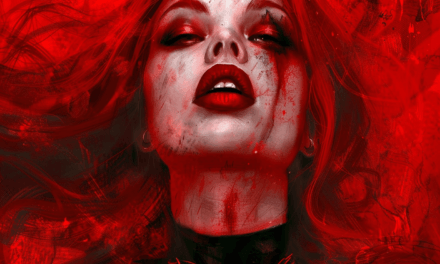
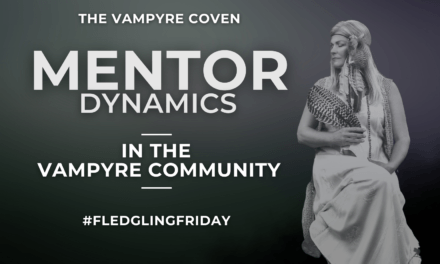
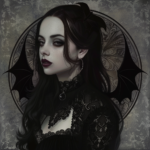






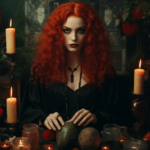

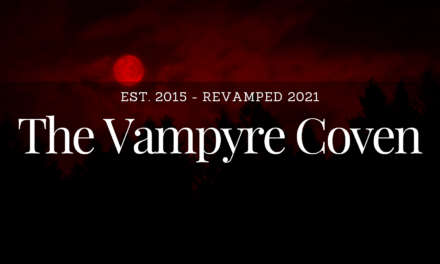
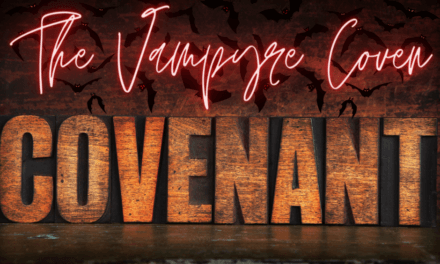
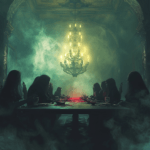
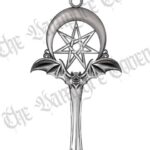
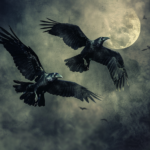
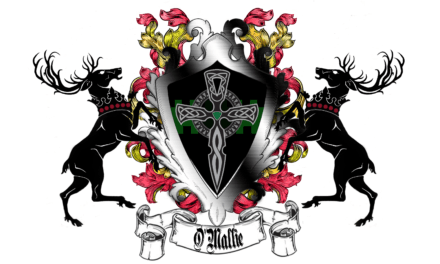
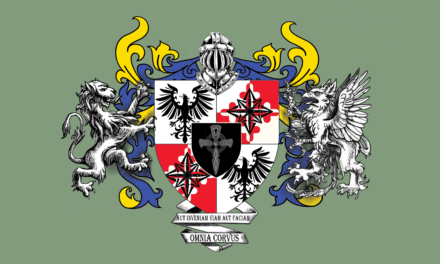
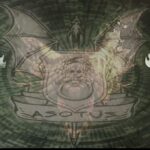


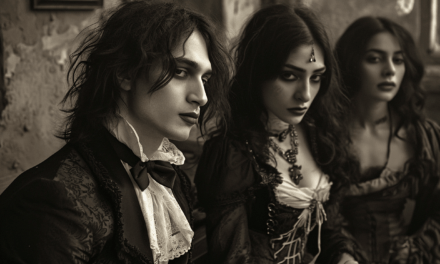


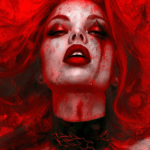
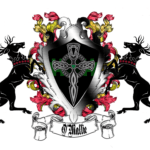
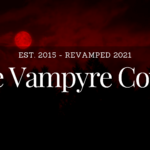
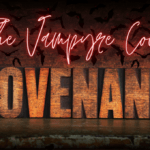
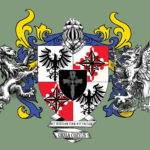

Recent Comments